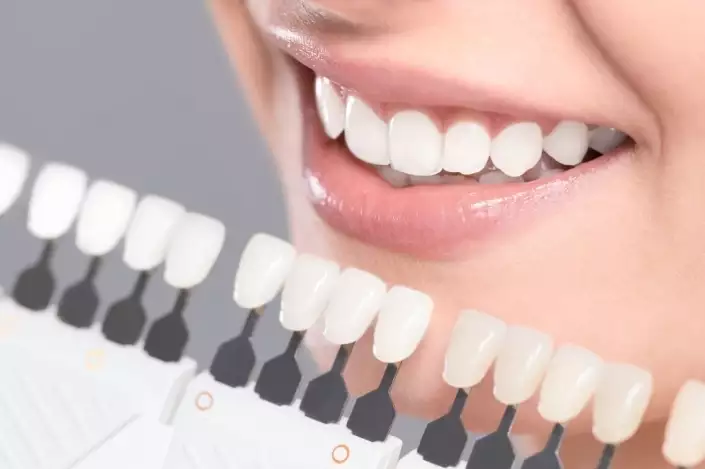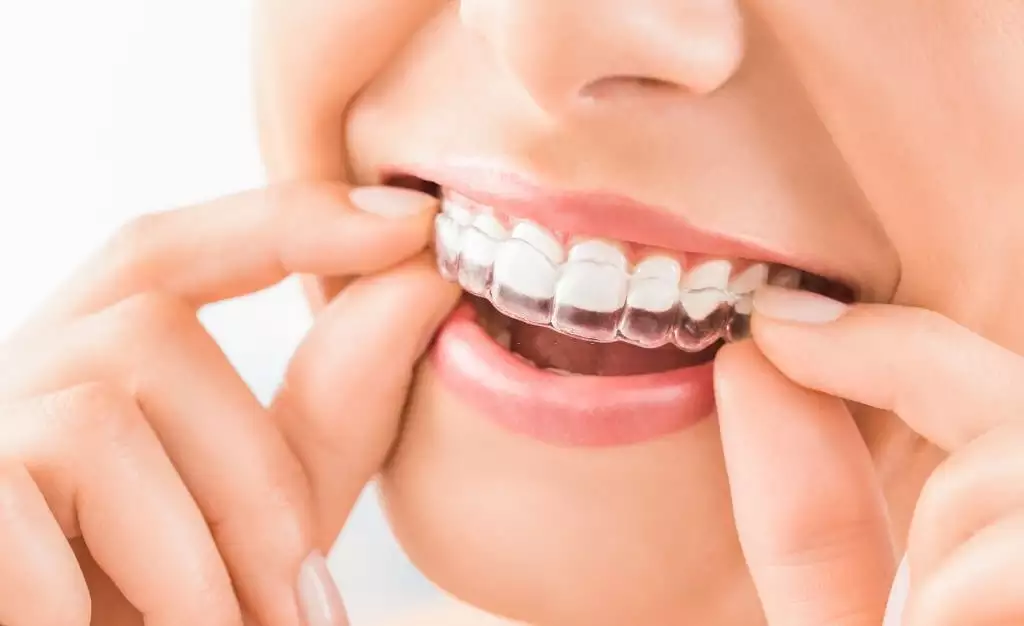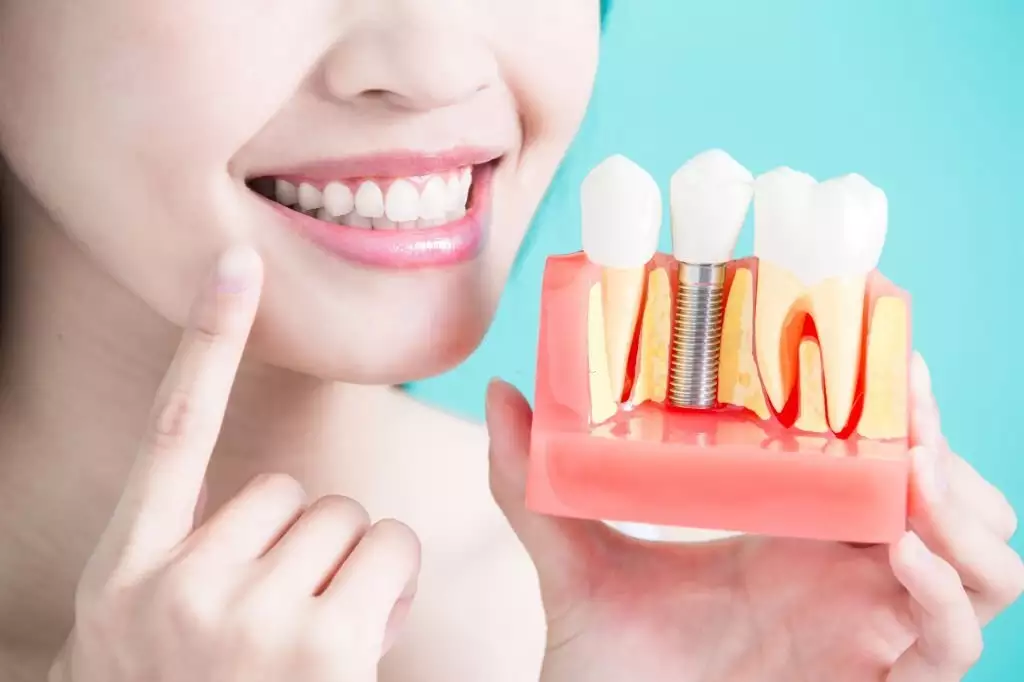
Dental implant procedures? how much is a dental implant? What to know?
Aesthetic dentistry is a field that treats congenital or acquired roughnesses and disorders in the appearance of teeth. It covers all of the treatments applied to make the teeth look aesthetic, their alignments compatible and they have a healthy structure. In dental aesthetics, which has a long history, materials used in teeth that are broken and need filling; were gold, silver and mercury, these metal-containing alloys, which served the same function functionally, caused an aesthetically bad appearance. Today, with the developing aesthetic technology, these materials have been replaced by composites that can adapt to every feature of the tooth and meet the appearance in the same way. Thus, the combination of color and form of the tooth can be met in the best way. This is one of the most important steps taken in dentistry.
The most frequently applied areas in dental aesthetics; smile aesthetics, gum aesthetics (pink aesthetics), teeth whitening (bleaching), composite bonding treatments, porcelain lamina treatments, full aesthetic porcelain crowns, dental implant applications, inlay/onlay restorations and laser treatments.
What is Smile Aesthetics?
Smile design is the process of correcting aesthetically crooked, rough teeth and gingival disorders in the most appropriate way to facial symmetry. The most important point in this treatment is not to spoil the naturalness. Dental health and appearance are key in our social relationships. Teeth that are yellowed, smelly or have cracks in places have a negative effect on the people we communicate with, and teeth that are esthetically distorted and unsightly do not provide a positive response to the listeners. From this point of view, providing complete dental care, compliance of the tooth structure with the golden ratio, the appearance and health of the teeth increase the memorability in social relations. Even the smallest problem that occurs in our teeth causes tabs in our smile and facial expressions, inhibiting a self-confident posture and facial expressions.
We have been aware of the importance of teeth in our appearance from past to present and studies have been carried out in this field. In the 21st century world, the most appropriate treatment methods have been developed and applied in the field of aesthetic teeth thanks to technological advances. The use of more than one method in smile aesthetics, which adopts a multi - disciplinary treatment principle, not only provides the opportunity to practice the methods used in dental care, but also restores the self-confidence of people by providing a much more aesthetic smile.

What are the Methods Used in Smile Design?
The methods used in dental aesthetics vary. Depending on the person's mouth structure and needs, one or more of these applications are also used in treatment.
- Porcelain veneers in smile design
- Zirconium in smile aesthetics
- Leaf porcelain (Laminate veneer)
- Laser teeth whitening (Bleaching)
- Pink aesthetic application on the gum (Gummy smile)
- Braces treatment for tooth alignment disorders (Orthodontics)
- Dental implants for smile aesthetics
- Dental prosthesis treatments
- Root canal and filling treatments
- Dental calculus and tartar cleaning (Detartage and curettage)
Porcelain Veneer
One of the most important points of dental aesthetics is that all teeth are in a healthy and useful structure. Porcelain veneers are a treatment method that is obtained from high quality porcelain and best adapts to the color and form of the teeth. In porcelain veneers, the shape of the tooth is determined by measuring the mold of the teeth, and then the area where the veneer will be applied is thinned. The veneers prepared for the teeth are polished and adhered to the teeth to be applied using a medical adhesive. Since these veneers are extremely light, they do not cause any weight on the teeth and reveal an aesthetically natural appearance.
Zirconium Coating
Obtained from ceramic or porcelain materials, zirconium is a durable and bright element, and it is a very useful material in dental aesthetic treatments due to its white color. It prevents oxidation, does not crack or break easily, has a natural-looking, semi-transparent structure. It is resistant to hot-cold meals and has a very long life. Due to its white color, it easily adapts to the tooth structure and looks natural.
Leaf Porcelain (Laminate veneer)
two Latin words, laminate Veneer means leaf porcelain. Leaf porcelains obtained from porcelain materials provide an aesthetic structure by correcting stained, yellowed and broken teeth. This method is mostly used in the treatment of dental disorders, cavities that develop over time or congenital spaces between teeth, teeth that are cracked or broken as a result of color, shape, impacts. Suitable for all teeth, including anterior and posterior teeth. A healthy tooth structure is easily achieved with leaf porcelains.
Laser Teeth Whitening (Bleaching)
Substances such as coffee and tobacco products that we consume during the day cause discoloration, even if we brush our teeth regularly in the morning and evening. In addition, while they cause color loss in foods and various other beverages, they also pave the way for tartar formation. These yellowings may not only be caused by our eating habits, but also by some medications, dental traumas and filling materials, and some vitamin and mineral deficiencies also cause weakening and discoloration of the teeth.
fluoride contained in the gel used in the whitening process protect and strengthen the teeth while the teeth are being cleaned. In this sense, teeth whitening is a very useful and long-lasting application for dental health. After the first whitening treatment, the teeth will be much whiter than before. However, coffee, tobacco, various carbonated and colored drinks, sugary foods consumed afterwards will cause yellowing again.
Bleaching is the method of cleaning and whitening the tartar and yellowing settled on the teeth with a special gel applied to the teeth. There are two types of bleaching , home bleaching and office bleaching. Depending on the condition of the tooth, the option that the doctor deems appropriate is usually applied, and if the patient prefers, he or she can apply this procedure at home in accordance with the prescription. Home bleaching takes 2 weeks on average.
Gum Diseases
The key to healthy teeth is having healthy gums. Problems that arise in the gums will affect the teeth in the short term and cause them to fall out and decay. Gums, hereditary factors, consumption disorders such as tobacco and coffee, wisdom teeth, neglected oral care, etc. Gum diseases occur as a result of the reasons. Gummy Existing gingival diseases should be detected and treated before starting smile treatment.
- Gum recession
- Gum swelling
- Gum odor
- Gum sensitivity
- Sagging gums
- Gum decay, bleeding, redness and melting
In order to prevent the development of major gum diseases, such as oral and dental care should be done without interruption, if these problems occur, a specialist dentist should be consulted. The emergence of any one or more of these diseases causes serious pain and can go as far as osteoporosis in case of progression. Since the teeth are directly connected to the brain and have higher nerve cells, even the smallest problem can pave the way for serious problems.
Gum-Pink Aesthetic Treatment (Gummy smile)
Gum problems vary; Since some people's teeth are short, their gums are completely exposed when smiling, which causes an aesthetically unpleasant appearance. On the contrary, if the teeth are quite large and the mouth structure is small, no gums are visible during laughing, which does not present an aesthetically attractive appearance.
The purpose of pink aesthetics is to correct asymmetrical disorders and to cure all problems that occur in the gums by treating them. With this method, both painful and bleeding processes come to an end and a much more aesthetic smile is obtained than before.
Unhealthy gums are most easily recognized by their color. Healthy gums are smooth, pink, shiny, and can be identified by the strong grip of the tooth. After the pink aesthetic treatment, the gums will heal and reach a pink hue that will become stronger after a short time. The treatment to be applied will be applied by making a decision as a result of the physician's determinations.
Some of the treatment methods are:
- Gingivectomy
- Gingivoplasty
- Lengthen the crown
- Positioning the lips
- Curettage
- Flap operation
Advantages of Gummy Smile
Treating the gums is very important in terms of oral health and other diseases it may cause. If gum diseases are not treated and progress, serious erosions and deformations will occur, from bone resorption to tooth loss.
- Gum treatment prevents inflammation or treats existing conditions
- The teeth are given symmetry and their alignment is regulated.
- Gums regain a healthy color and texture
- Decays and tooth loss are prevented
- Gum bruising, bleeding and inflammation are prevented
- The problem of bad and inflamed odor in the gums is solved
- The result is you can smile easily, communicate at close range and feel much more confident.
Braces Treatment (Orthodontics)

Mostly congenital, in some cases disorganized as a result of trauma; It is a treatment method applied when overlapping, crooked teeth are positioned at the wrong points. In orthodontic surgery, braces can be applied to the anterior surfaces of the teeth as well as to the posterior, that is, the inner surfaces. At the end of regular use for a certain period of time, the teeth come to a certain level, acquire a symmetrical appearance and become healthy.
Teeth in bad alignment is a huge obstacle not only in terms of appearance, but also in front of a healthy dental health. Since they are in a crooked and cramped structure, the foods consumed accumulate between the teeth more easily, they are more difficult to clean, and therefore they are more susceptible to decay and inflammation.
After orthodontics, the teeth gain an impressive appearance, people's self-confidence increases and they feel happier than before.
Dental Implant
Dental implants used in the treatment of falling teeth are the application of placing titanium-containing screws into the jawbone, at the point where the teeth are falling, and covering them with materials made of porcelain. While falling teeth prevent people from laughing comfortably, they also cause chewing problems during the eating activity.
Implants positioned in the jawbone replace the lost tooth, they do not cause any damage to other teeth, there is no metal taste in the mouth and they are used for a lifetime. Since they are made of extremely robust materials, they do not undergo abrasion, breakage and color change in the following processes.

Dental Prosthesis Applications
These are dental implants that play a major role in the appearance of teeth, replace lost teeth with stronger teeth, and are highly compatible with bone structure and dental tissue. Prostheses, which are a type of dental veneer treatment, are divided into two as fixed and mobile.
Fixed Prosthesis: These are materials in the form of fixed crowns, metal or bridges made on dental implants .
Removable Prosthesis: It is a type of prosthesis that is developed when more than half of the teeth fall out and that people can put on and take off. It performs all eating and drinking functions easily and does not interfere with the application of mimics and gestures. It also plays a role in the formation of smile aesthetics by filling the gaps caused by tooth loss.
Who is Smile Aesthetics Applied to?
Dental aesthetics, which is an important application that increases the self-confidence of the person, has been developed for people suffering from the following problems.
- In cases where there is discoloration, yellowing, darkening, staining of the teeth
- In case of irregularities, distortions and overlapping of the teeth
- In case of tooth lengths too long and too short or unevenness
- In cases of missing, cracked-broken, worn teeth
- In case of existing symmetry disorders between tooth length and gums
- In case of general dissatisfaction with the tooth structure
It is a treatment method that can be applied for.
Before moving on to the smile design, tartar, cavities, bacteria, yellowing and staining on the tooth, etc. problems are identified. Since these problems directly affect dental health, their treatment is started first. After the treatment, the teeth and gums are healed, and a smile design with a healthy structure, aesthetic appearance and extremely proportional to the face emerges.
How Long Does Smile Design Take?
Although the smile design period varies depending on the treatment needs of the patient, it can also be terminated in a very short time. While it can be completed in an average of 1 week, it can be completed in 3 days for people who do not have time. Even if patients have more than 1 tooth loss, they can have an aesthetic smile with the treatment applied to 3 or 4 teeth. While this process can take about 1 month in all mouth implant and coating treatments, this period can be shortened considerably for those who want to achieve an aesthetic smile in a minimum time.
Is Smile Design Permanent?
Smile aesthetic treatment varies from person to person and according to the treatment applied, and determines the life of the procedure. After dental design, patients should not neglect to have dental check-ups every 6 months. If the instructions of the specialist doctor are followed and oral and dental care is applied regularly, the life of this treatment will be quite long.
However, if these cares are neglected, it is perfectly normal for the pre-treatment condition to recur after a while. After the formation of tartar again, the emergence of bacteria and tooth loss will increase. In order to avoid all these, you should take care of your teeth after the treatment and not neglect their care, so you will have a healthy smile for a lifetime.
Smile Design Prices
The prices of dental aesthetics, that is, smile design, vary according to the hospital and the variety of the procedures. The problems that occur in the teeth and gums of each person differ, and it requires a comprehensive examination process to determine the exact cause of these problems and what methods are required for treatment. In this sense, it is not healthy and correct to explain a price on the internet. It is best for patients to have one-on-one meetings with doctors, to be examined and to learn the requirements of the process from the specialist and get a price after they have expressed their complaints in the clearest way.
Frequently Asked Questions
- What are the smile design prices?
- What is aesthetic smile design? Why is it done?
- What do smile designers want?
- What is dental aesthetic smile design?
- How long does smile aesthetics take?
- Is Smile Aesthetics permanent?